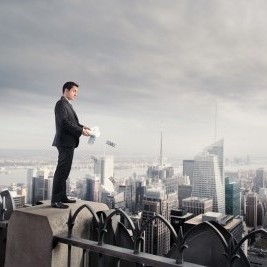The bigger they are the harder they fall?
What have tall buildings and financial crashes got in common?
Well according to a report by Barclays Capital, there is an “unhealthy” link between the building of skyscrapers and impending financial collapse

Their Skyscraper Index shows an unhealthy correlation between construction of the next world’s tallest building and an impending financial crisis.
They pointed out that the world’s first skyscraper, the Equitable Life Building which was completed in 1873 was followed by a 5 year recession. The Empire State Building was built just as the Great Depression started. Malaysia’s Petronas Towers was built in 1997 which coincided with the Asian financial crisis. The current tallest building in the world, the Burj Khalifa was finished in 2010 and heralded the crisis in Dubai.
According to Barclays, “the world’s tallest buildings are simply the edifice of a broader skyscraper building boom, reflecting a widespread misallocation of capital and an impending economic correction”.
They then go on to point out that “Investors should therefore pay particular attention to China – today’s biggest bubble builder with 53% of all the world’s skyscrapers under construction – and
India – which with just two completed skyscrapers, now has 14 skyscrapers under construction”.
Now whilst this may be worrying for people who have invested in the yet to be built skyscrapers there appears to be some reasoning behind this link.
Building a skyscraper takes a huge amount of capital and confidence. Both of these are only really going to be present in a boom time.
It takes several years to construct the buildings so by the time they are complete there is a pretty good chance that the economic cycle will be in a trough rather than the peak when the project was signed off.
Is this a case of the bigger they are the harder they fall?







